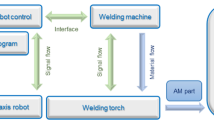Abstract
Within this paper a new approach to enhance the process window in sheet metal hydroforming processes will be presented. The key idea of the technology is the local adaption of the properties of the active fluid medium. In this case the magnetorheological fluid (MRF) Basonetic® 5030 is used and the fluid behavior is changed due to a partially applied external magnetic field. Based on the new property distribution the medium can be used as forming and sealing medium at the same time. The results are compared to the values reached with mineral oil. The presented work covers all necessary steps for a successful application of the technology. After the presentation of the used fluids, a material characterization and the tools, which are developed for this reason, as the sealing limits for two different configurations are determined. Based on these investigations forming operations are carried out at the related process parameters to show up the potential of the MRF. At the end a numerical model is built up and validated for both fluids used to offer a qualified tool for process design.








Similar content being viewed by others
References
Kleiner M, Geiger M, Klaus M (2003) Manufacturing of lightweight components by metal forming. Ann CIRP 52(2):521–542
Stolpe M (2005) Weg vom Öl. Mobilitätsoffensive. Berlin. 12 Apr 2005
Mörsdorf W, Zaps D (2005) Werkstofforientierte Karosserietechnologien. 4. Chemnitzer Karosseriekolloquium, pp 29–39
Allwood JM, Cullen JM (2012) Sustainable materials with both eyes open. Future buildings, vehicles, products and equipment—made efficiently and made with less new material. UIT Cambridge Ltd., Cambridge
Birkert A, Sünkel R (2002) Hydroforming-Umformen mit Wirkmedien im Automobilbau. Verlag Moderne Industrie Landsberg
VDI-Richtlinie 3146 Blatt 2 (2000) Innenhochdruck-Umformen. Maschinen und Anlagen. Verein Deutscher Ingenieure (Hrsg.). Beuth, Düsseldorf
Hein P (1999) Innenhochdruck-Umformen von Blechpaaren: Modellierung, Prozessauslegung und Prozessführung. In: Geiger M, Feldmann K (eds) Fertigungstechnik—Erlangen, Band 96. Meisenbach, Bamberg
Bahn V, Noack S (2005) Controlled material flow in hydroforming by multipoint drawing technology. Special Issue on Sheet Metal Hydroforming, Steel Research International 76(12):852–856
Bobbert S (1999) Process limits for the hydroforming of sheet metal pairs. In: Geiger M (Hrsg) Adv. techno. of plasticity, vol II. Proceeding of the 6th ICTP, 1999, Nürnberg, Germany. Springer, Berlin, pp 1261–1266
Groche P, Ertugrul M, Metz C (2005) Increase of process stability of sheet metal hydro-forming due to feed back control. Special Issue on Sheet Metal Hydroforming, Steel Research International 76(12):879–883
Neugebauer R, Bahn V, Noack S (2006) Gesteuerte, partielle Beeinflussung des Werkstoffflusses zur Erweiterung der Umformgrenzen beim Innenhochdruck-Blechumform-Prozess (IHB). In: Kleiner M (Hrsg) Abschlussbericht zum DFG-Schwerpunktprogramm SPP 1098—Wirkmedienbasierte Fertigungstechniken zur Blechumformung. Shaker, Aachen, pp 289–303
Groche P, Metz C, Ertugrul M (2005) Material flow control and optimization using active-elastic tools for high-pressure forming of non rotationally-symetric sheet metal parts. Special Issue on Sheet Metal Hydroforming, Steel Research International 76(12):883–889
Khandeparkar T, Liewald M, Siegert K (2006) Hydromechanisches Tiefziehen tiefer Bauteile, Untersuchungen bei hohen Gegendrücken. wt Werkstatttechnik online 96(10):721–726
Behrens B-A, Eckold C-P, Hübner S, Groche P, Ertugrul M (2010) Investigation of segmented hydro-elastic blank holder for deep drawing. In: IDDRG conference proceedings. 50th Anniversary conference. Tools and technologies for the processing of ul-tra high strength steel, Graz, Österreich, pp 281–288
Kleiner M, Gartzke A, Kolleck R, Weidner T (1996) Entwicklungen neuer Verfahren zum Tiefziehen mit Wirkmedien. In: VDI Berichte Nr. 1277, VDI-Verlag, Düsseldorf, pp 325–339
Shell Deutschland Oil GmbH (2004) Sicherheitsdatenblatt Shell Tellus Oil 100
N.N. Magnetorheological Fluid Basonetic® 5030. Optimum torque transmission for clutch-type applications. BASF SE Inorganic Specialities. G-CAS/BM—E 100. Germany
Jolly M, Bender J (1998) Properties and applications of commercial magnetorheological fluids. In: Proceedings smart structures and materials, pp 262–275
Lindler JE, Choi YT, Wereley NM (2003) Double adjustable shock absorbers utilizing electrorheological and magnetorheological fluids. Int J Veh Des 33(1–3):189–206
Laun HM, Gabriel C, Kieburg C (2010) Twin gap magnetorheometer using ferromagnetic steel plates—performance and validation. J Rheol 54(2):327–354
Acknowledgments
The authors are grateful to the German Research Foundation (DFG) for supporting the investigations in the research project “Sheet metal hydroforming of tailored semi-finished products using magnetorheological fluid as forming and sealing fluid” (ME 2043/30-1). Furthermore we thank Dr. Christoffer Kieburg, BASF SE, for the fruitfull discussion about topics related to magnetorheological fluids and BASF SE for the allocation of the MRF.
Author information
Authors and Affiliations
Corresponding author
Rights and permissions
About this article
Cite this article
Rösel, S., Merklein, M. Improving formability due to an enhancement of sealing limits caused by using a smart fluid as active fluid medium for hydroforming. Prod. Eng. Res. Devel. 8, 7–15 (2014). https://doi.org/10.1007/s11740-013-0496-9
Received:
Accepted:
Published:
Issue Date:
DOI: https://doi.org/10.1007/s11740-013-0496-9




